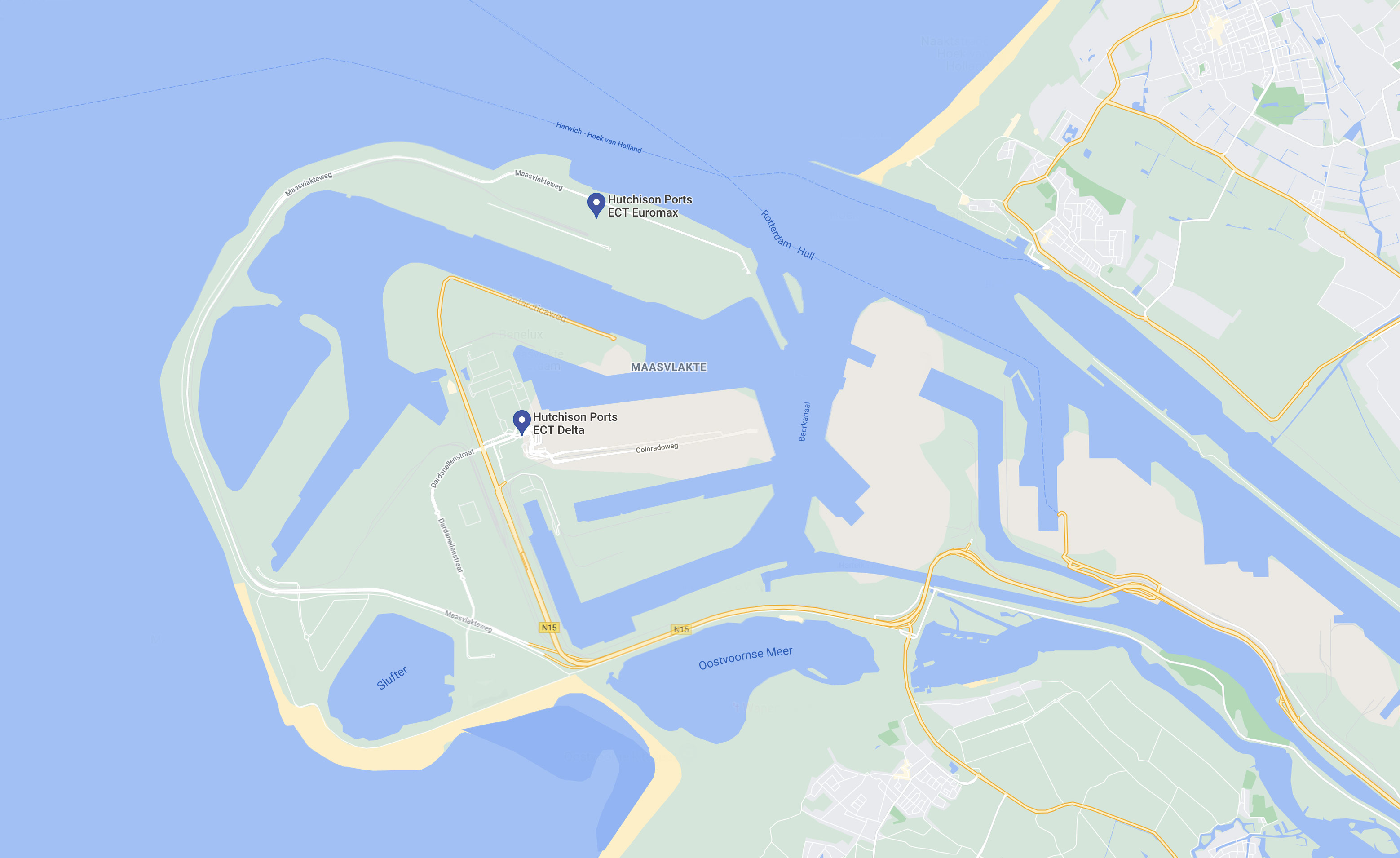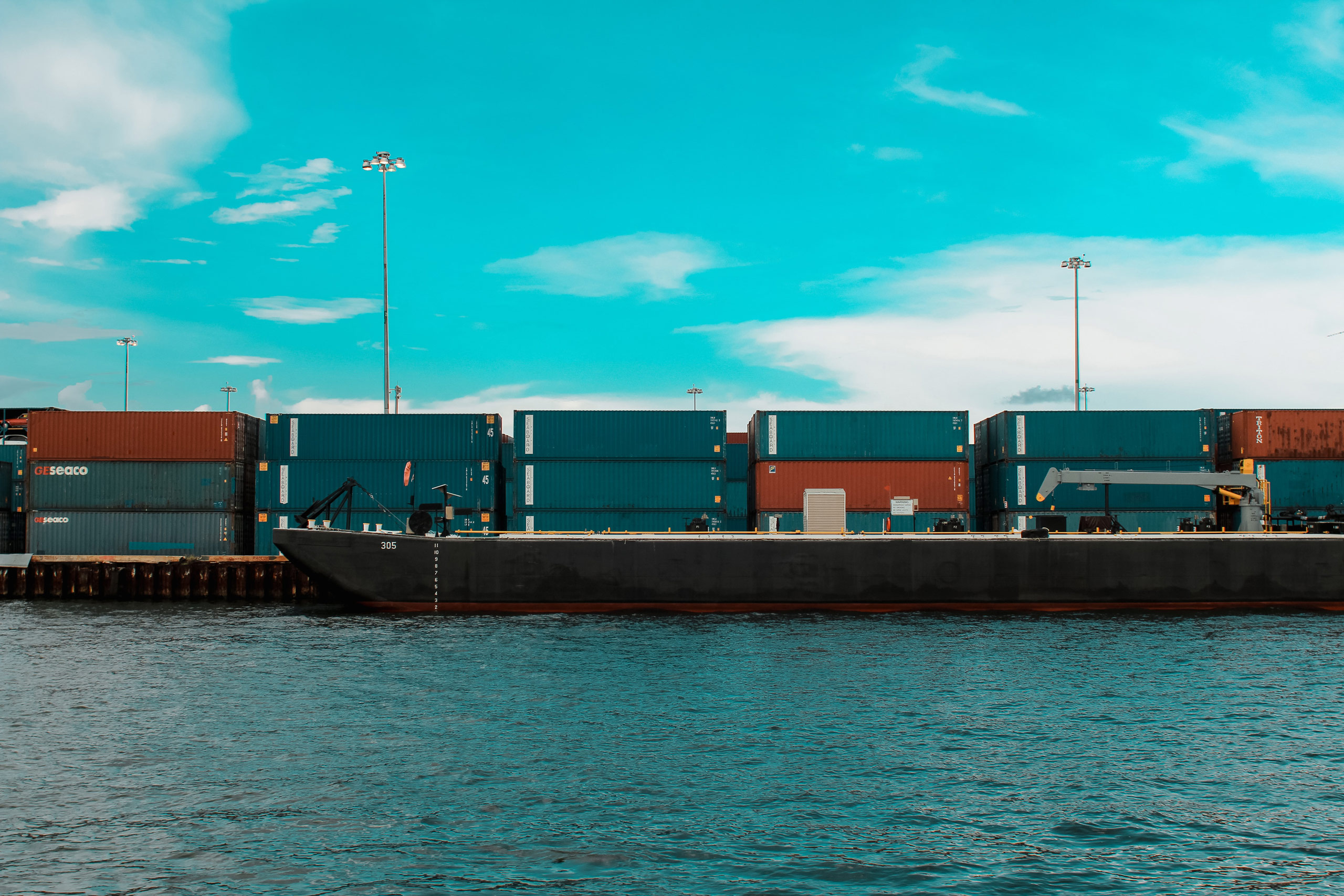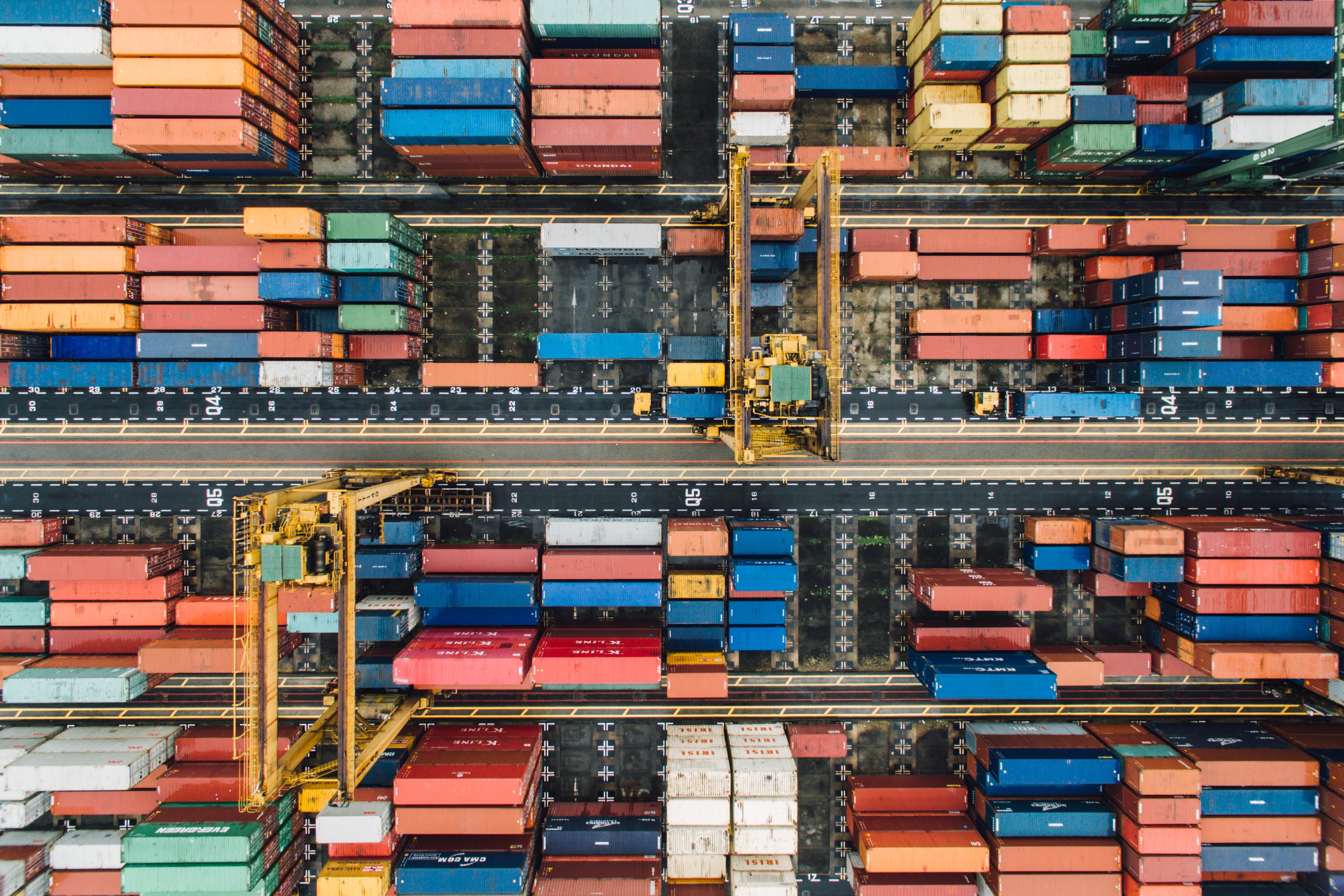

Completely crewless deep-sea vessels may be a distant and debatable future. But autonomous intra-port container shuttles and unmanned short-sea shipping may not be so remote on the horizon — in fact, they are much needed to decongest the cargo flow inside seaports and between them and their hinterland.
Opened in the 14th century, the Port of Rotterdam is one of the oldest and the sixth busiest port in the world by annual cargo throughput. It is also one of the largest ports outside South Asia in terms of area. Covering 105 square kilometres, the port today stretches over 40 kilometres and a quay length of 89 kilometres, dotted with over 90 terminals. Out of these, 35 are for liquid bulk cargoes, 15 for dry bulk cargo, 17 for multi-purpose use and five independent deep-sea container terminals that form Europe's largest container cluster.
Thus, to say efficient intra-port and inter-terminal cargo movements are a huge part of the port’s daily operations, would be to say the least.
Picture this, for instance: When a big ship comes in with 20,000 containers, most of these massive metal boxes don’t stay in Rotterdam. They get loaded onto trucks to be transported to another terminal within the port, from where the freight
gets forwarded to different parts of inland Europe — and that's the bottleneck.

“So, for a single container to get transported between two terminals within the port, the 20-something kilometres straight drive takes 30 minutes one-way. And it doesn't include loading, unloading, clearing, waiting and the rest of the steps in this process — not very efficient,” tells Hendrik Busshoff, Product Manager Autonomy, Wärtsilä Voyage.
That is why the Rotterdam Port Authority is introducing the Container Exchange Route; the most advanced container exchange system of its kind to improve cargo flow within the port. The CER is based on dedicated infrastructure, standard logistics agreements and ICT systems that interconnect all the port’s container facilities.
But the situation isn’t unique to Rotterdam alone. It’s an issue faced by all major seaports globally that are a gateway to inland logistics networks. “Take the case of Hamburg, or for that matter, any big port in Asia. You’ll
see they all have very similar problems. They, too, have many container terminals spread over a large area. And the road between two terminals is sometimes just a single bridge, leading to massive traffic jams and congestion. Here, we cannot just
build more bridges because they must be at least 60 meters tall for large ships to sail under. Moreover, bridges need building permissions. With ports often located in densely populated areas, it increases
the risk of land usage conflicts,” explains Busshoff. So, what are the alternatives?
Decongesting the cargo flow
One part of solving this jigsaw puzzle is autonomous trucks. Many terminals are already automated internally and connecting them with fenced roads where automated vehicles could operate safely, without interfering with humans, is possible but has limited scope.
“It may work to some extent, but there's simply not enough land,” says Busshoff. “There are many container terminals around the port area. And you may not be able to connect all of them with fenced roads without disturbing the life around.”
Rotterdam is a densely populated city, and so building new infrastructure is not only going to be time-consuming but also a challenge in terms of urban legislation. Therefore, automated overland transport modes alone will not be able to absorb the emerging capacity bottleneck for internal container movement.
No matter how autonomous and clean a truck might be, if it ends up spending the same amount of time stuck in long traffic jam as today, all you have achieved is making the traffic exhausts a bit cleaner but probably also more expensive.
- Hendrik Busshoff, Product Manager Autonomy, Wärtsilä Voyage
Plus, compared to other means, the road is not the most environmentally friendly way to move goods or people anyway. To quote Rose Goerge’s book, Ninety per cent of Everything: "Sending a container from Shanghai to Le Havre (France) emits fewer greenhouse gases than the truck that takes the container on to Lyon."
The obvious answer is, therefore, using barges to shuttle things. The waterways are hugely underutilised: they are a well-established route with no need for additional infrastructure, but, at present, we hardly have any cargo traffic movements on
them. And even the EU recognises its untapped potential.
The EU is onboard
Right now, only 6% of the inland cargo in the European Union (EU) gets transported via ships, and the majority is carried by trucks. As water transport consumes much less energy than roadways, and thus less polluting, the EU has been trying to move 25% more cargo by waterways before 2030. However, no significant progress has been made in this direction in the last few years.

Some manned barged and inland vessels are on the routes but are old and inflexible and thus not a lucrative option for freight forwarders.
“The current logistics operators with older barges typically have long waiting times, levy energy surcharges, and their operability depends on even on things like water levels. That is, if the water levels drop, only smaller vessels can operate, which is not suitable to maintain global container movement efficacy,” tells Busshoff.
To resolve this, the EU has awarded € 25 million to a Project nicknamed MAGPIE (sMArt Green Ports as Integrated Efficient multimodal hubs) — an international collaboration between the port authorities of Rotterdam, DeltaPort (Germany), HAROPA (France: La Havre, Rouen, Paris) and Sines (Portugal), in partnership with ten research institutions and over 30 companies in the Netherlands, Germany, France, Portugal and Denmark.
Wärtsilä, the largest industrial partner of MAGPIE, is set to receive the biggest grant for a sub-project that will develop a commercially viable autonomous zero-emission electric container shuttle to significantly enhance efficiency through automated seaborne cargo transhipments.
So, what’s unique about another autonomous electric vessel? “With this e-barge, our aim is not another autonomous proof. We are looking beyond just “automation technology” and considering the entire logistic chain, safety and sustainability but also non-technical issues like regulations, commercial viability and work culture,” says Busshoff.
So, it is much more than just automating a single barge; it is about finding a commercially and ecologically sound solution for a critical pain point in the current logistics chain — a grand plan that sets out how transportation within, to and from ports can be made carbon-free by 2050.
- Hendrik Busshoff, Product Manager Autonomy, Wärtsilä Voyage
Autonomous route to smooth short-sea shipping
One may wonder, if the project’s central focus were a green solution to decongest intra-port movements, a battery-operated barge would have sufficed. So, why did Wärtsilä Voyage decide to throw a curveball by adding the ‘autonomous’ factor into the equation? That too, for a solution which will primarily operate in heavily populated waterways.
To answer in one sentence: For such an e-vessel to make commercial sense, it demands to be autonomous.
To become a part of the modern-day efficient supply chain, short-sea shipping transport networks need to be much more flexible, readily available and become a clean mode of transport. And the old fragmented operational set-up is simply not fit for the job anymore.
“If inland transport is to be a truly competitive alternative to roadways for freight forwarders, booking vessels need to become as easy as booking a taxi. Which means standardisation of vessels and consolidation of fleet ownership,” tells Busshoff.

If you look at the inland fleet in Europe today, you see a very fragmented industry, which is a great ingredient for inefficiency. Moreover, the fleets are ancient, mostly built in the 1960s and 70s.”
“The propulsion system of many of these vessels is primaeval as well. A 50-year-old engine cannot possibly deliver the fuel efficiency, exhaust gas quality, or data analysis and optimisation that tomorrow’s sustainable shipping and ESG demands,” he adds.
On the other hand, if the shipping industry stakeholders come together and decide to build a network of the new e-barges, it’ll cost more initially. To compensate, you’d have to save somewhere else, or the asset utilisation must go up. This means, one, the operators will have to accommodate more containers per vessel. And two, the asset should be able to work around the clock, 24/7, and in all weather conditions — humanly impossible, but not for machines."
Moreover, on an inland waterway vessel, the crew costs amount to one-third of operational costs. And this cost is only going to go up as there is already a critical crew shortage in inland navigation that’s worse than in deep-sea shipping.
"To be commercially viable in inland operations, you’ll have to scale down the true cost and scale up your assets. So, in case of smaller assets that operate more flexibility and frequently, you will be penalised on the OPEX as it will be grossly disproportionate because of crew cost,” explains Busshoff.
Reducing on-board crew allows you to design the ship differently and have a better size/capacity ratio. Plus, on uncrewed vessels, energy-consuming facilities, such as heating and sanitary facilities, can be dispensed which further reduces the total operational costs.
Testing waters to sail farther
The autonomous e-barge for Port of Rotterdam kicked off in October 2021, and we can soon expect to see the first on-water demonstration.
Our ambition is to see these autonomous container shuttles introduced into an intelligent logistics network within the next few years, which overlaps with EU’s target to make short-sea shipping commercially more viable, and we’ll support this mission with our technology that gives customers the needed competitive edge to enable this market shift.
- Hendrik Busshoff, Product Manager Autonomy, Wärtsilä Voyage
What about regulatory and safety concerns? “It’s a lot easier to get regional approvals for short-distance inland and coastal vessels that operate in restricted waters than to get IMO’s nod on container vessels performing intercontinental voyages autonomously,” he adds. “And that’s why we decided to start with an e-barge. When we have mastered the easy stuff, we'll start spreading out — go longer, farther to more complicated locations, situations and operations.”
Completely crewless deep-sea vessels may be a distant and debatable future. But, clearly, automation of short-sea shipping — to improve safety, decongest ports, improve the inland logistics chain and help shipping become greener — isn’t that remote into the future.





.tmb-448x262.jpg?Status=Master&Culture=en&sfvrsn=10a78c44_1)
.tmb-448x262.png?Status=Master&Culture=en&sfvrsn=b8ed9844_1)